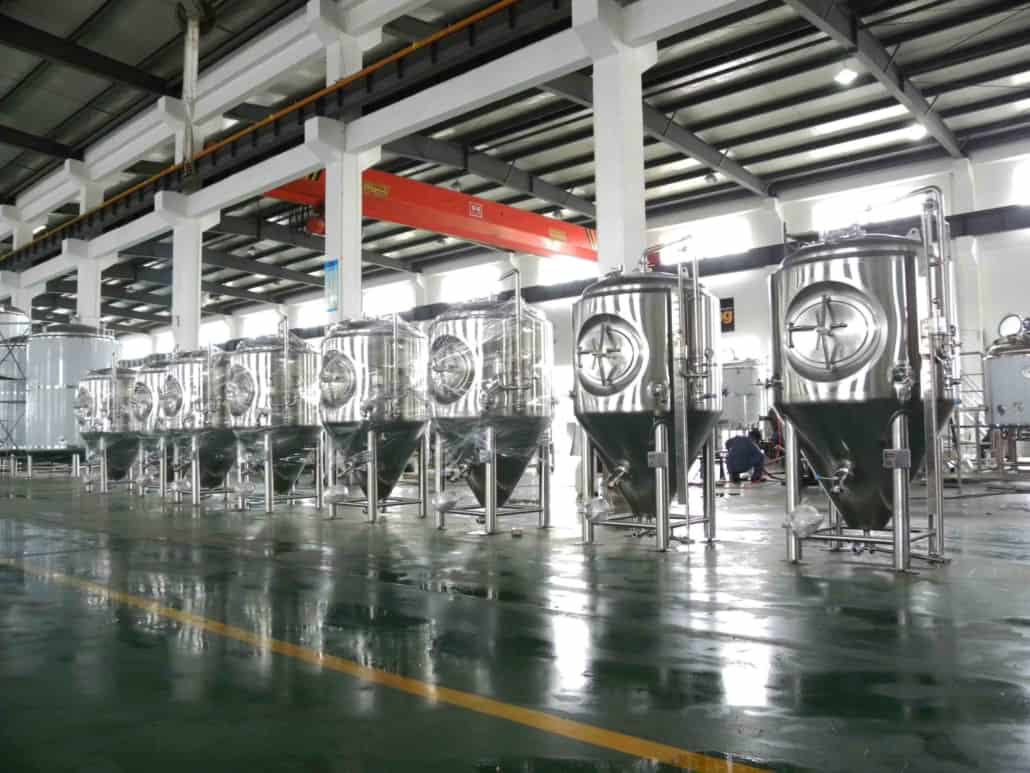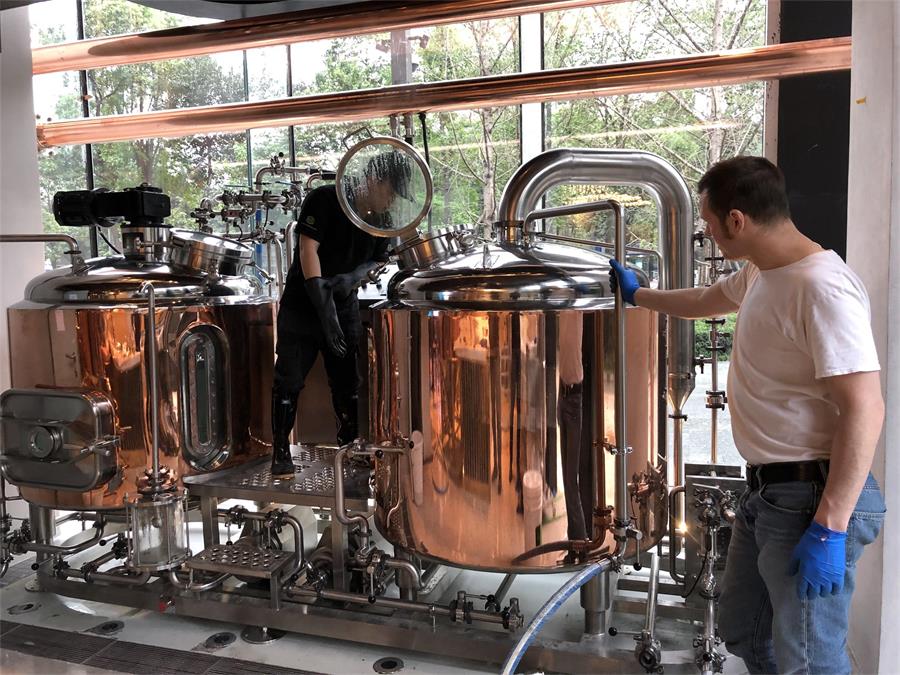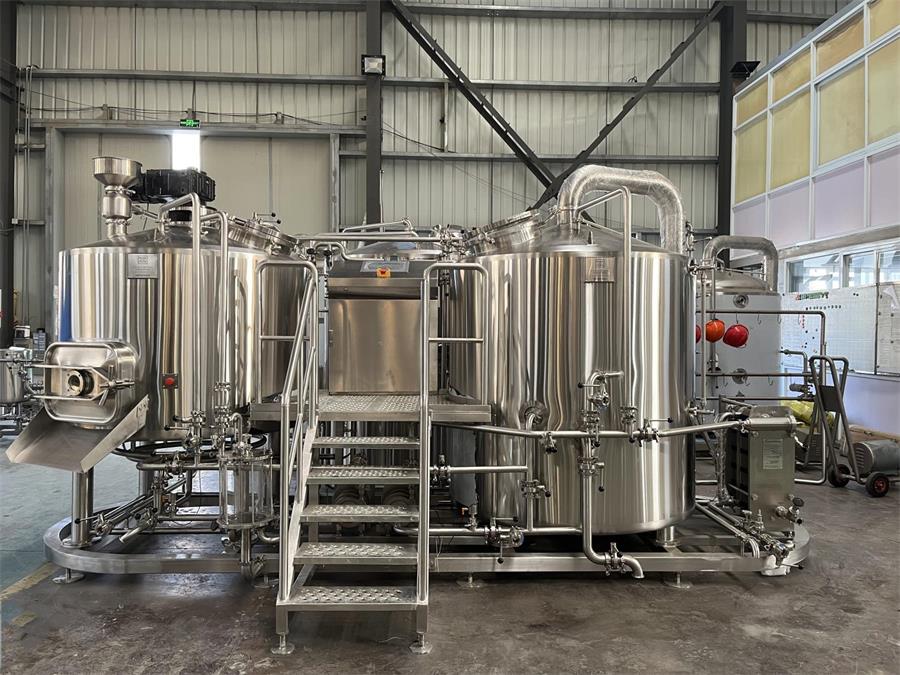10 Essential Tips for Choosing Beer Fermenter Tank
Introduction
Brewing beer is an art form that dates back centuries, and modern technology has taken it to new heights. One crucial element in the beer-making process is the Beer Fermenter Tank. In this article, we will explore the ins and outs of this essential equipment used by breweries around the world.
What is a Beer Fermenter Tank?
A Beer Fermenter Tank is a specialized vessel used in the fermentation stage of beer production. During this phase, yeast interacts with the wort to convert sugars into alcohol and carbon dioxide, giving beer its unique flavors and aromas. The fermenter tank provides an ideal environment for yeast to work its magic.
The Importance of a Beer Fermenter Tank in the Brewing Process
The beer fermenter tank plays a critical role in determining the quality and characteristics of the final brew. It allows for precise control over various fermentation parameters, leading to consistent results and flavor profiles. Let’s delve deeper into the significance of this vital equipment.

Types of Beer Fermenter Tanks
There are several types of beer fermenter tanks available, each offering specific advantages for different brewing setups. Brewmasters can choose from a variety of options based on their production needs and budget:
Conical Fermenter Tanks
The conical fermenter tank is a popular choice among brewers due to its efficient design. Its cone shape allows sediment, yeast, and other impurities to settle at the bottom, simplifying the separation process and reducing off-flavors in the final product.
Uni-Tanks
Uni-tanks serve a dual purpose, combining both fermentation and aging capabilities. This flexibility saves space and eliminates the need for transferring beer between vessels, minimizing the risk of contamination and oxidation.
Bright Tanks
Bright tanks are used for secondary fermentation and carbonation, ensuring the beer reaches its desired clarity and carbonation level before packaging.
Open Fermenter Tanks
Traditionally, open fermenter tanks were widely used. Although they are less common today due to the risk of contamination, some breweries still employ them for specific beer styles.
Material and Design Considerations
The choice of materials and design features can significantly impact the performance and longevity of the beer fermenter tank. Manufacturers offer various options to meet the specific requirements of different breweries:
Stainless Steel Fermenter Tanks
Stainless steel fermenter tanks are a favorite among brewers for their durability, ease of cleaning, and resistance to corrosion and contamination.
Plastic Fermenter Tanks
Plastic fermenter tanks are affordable and lightweight, making them an attractive choice for smaller breweries or homebrewers.
Insulated Fermenter Tanks
Insulated fermenter tanks help maintain a stable temperature during fermentation, crucial for producing consistent beer.

Capacity and Size Options
The size of the beer fermenter tank directly affects the batch size and production volume of a brewery. Breweries can choose tanks ranging from small-scale to large-scale, depending on their output requirements.
Temperature Control and Cooling Systems
Maintaining the right temperature during fermentation is crucial for yeast activity and flavor development. Learn how cooling systems and temperature control mechanisms contribute to successful fermentation.
Cleaning and Sanitization
Proper cleaning and sanitization of the beer fermenter tank are paramount to producing high-quality and safe beer. Discover the best practices to maintain a hygienic environment for fermentation.
The Fermentation Process Explained
Unravel the science behind fermentation and how yeast converts sugars into alcohol and carbon dioxide, shaping the beer’s profile.
Tips for Efficient Fermentation
Explore tips and tricks to optimize the fermentation process, leading to better yields and flavors in the final product.
The Role of Yeast in Fermentation
Yeast is the unsung hero of beer production. Delve into its essential role and the different strains that contribute to diverse beer styles.
Monitoring and Measuring Fermentation
Monitoring fermentation parameters and measuring progress are crucial for producing consistent and high-quality beer. Learn about the tools and techniques used to track fermentation.
Common Issues and Troubleshooting
Despite careful preparation, issues can arise during fermentation. Identify common problems and effective troubleshooting methods.
Off-Flavors
Identify off-flavors in beer and understand their causes and remedies.
Contamination
Discover the sources of contamination and how to prevent and deal with it effectively.
Stuck Fermentation
Learn about the factors leading to stuck fermentation and how to revive the process.
Sustainability and Energy Efficiency
Breweries are increasingly adopting sustainable practices to reduce their environmental impact. Explore energy-efficient approaches to fermentation.
Future Trends in Beer Fermenter Tanks
As technology and brewing techniques evolve, so do beer fermenter tanks. Find out about the latest trends shaping the future of brewing.

Conclusion
The beer fermenter tank is the backbone of the fermentation process, shaping the taste, aroma, and quality of the final product. With the right choice and care, this crucial equipment allows brewers to create exceptional beers that delight consumers worldwide.
FAQs
Q: Can I use a plastic fermenter tank for professional brewing? A: While plastic fermenter tanks are suitable for smaller-scale operations, most professional breweries opt for stainless steel tanks due to their durability and ease of cleaning.
Q: What is the role of pressure in fermentation? A: Pressure plays a significant role in carbonation and the development of certain beer styles. For example, some Belgian ales benefit from higher pressure during fermentation to achieve the desired effervescence.
Q: How do I troubleshoot stuck fermentation? A: Stuck fermentation can result from various factors, such as temperature fluctuations or insufficient yeast nutrients. Address the root cause by adjusting temperature or providing additional nutrients to revive fermentation.
Q: Are there any environmental benefits to using insulated fermenter tanks? A: Yes, insulated fermenter tanks contribute to energy efficiency by reducing the need for external heating or cooling. This not only saves costs for breweries but also helps reduce overall energy consumption and greenhouse gas emissions.
Q: What are some innovative features to look for in modern fermenter tanks? A: Modern fermenter tanks often come with advanced features, such as automated temperature control, data monitoring, and pressure regulation systems, enhancing efficiency and consistency in the brewing process.
Share this entry
Interested in learning more about Brewing Systems including additional details and pricing information? Please use the form below to contact us!
YOLONG BREWERY EQUIPMENT FAQS
- Commercial Brewery / Craft Brewery / Microbrewery / Nanobrewery
- What is The Difference Between Craft Beer and Industrial Beer?
- The Bespoke Differences In Custom Brewing Systems
- Everything You Need to Know About Kettle Souring
- How to Choose Brewing Equipment for Your business?
- How To Choose The-Best Partner To Build Your Commercial Microbrewing System?
- Two Detection Sensors That You Need To Use In Your Brewhouse System
- Remote Control Applications in Brewing Equipment/How does it work?
- How To Clean Your Brand New Brewery Tanks?

